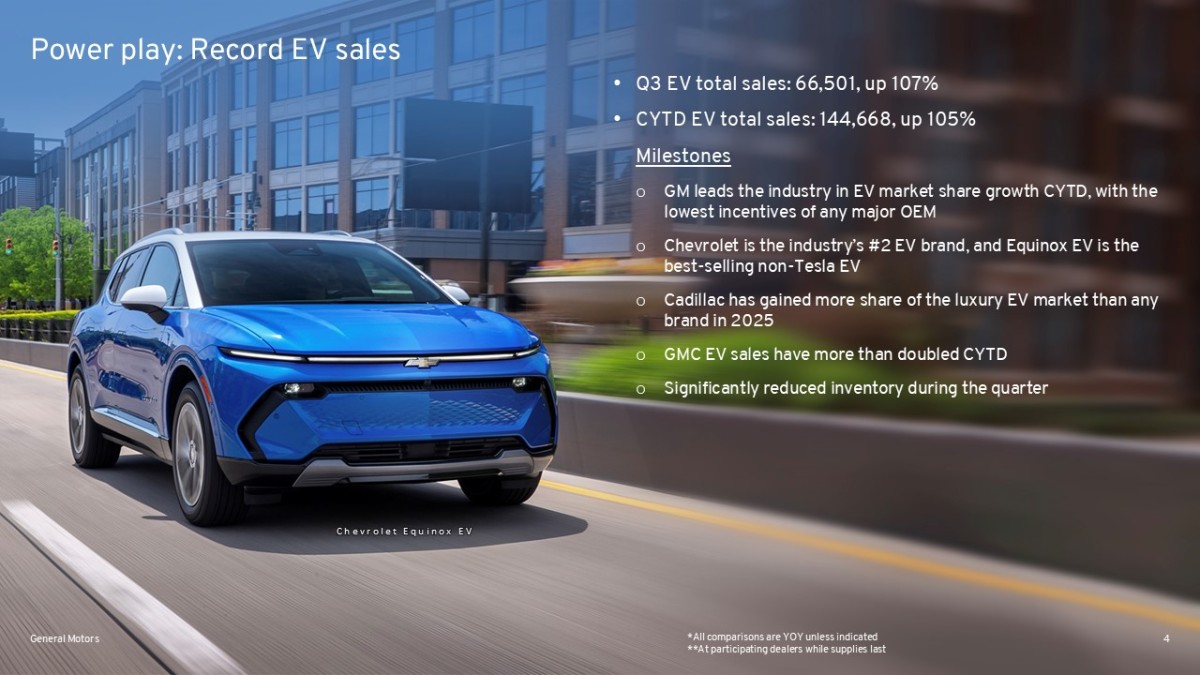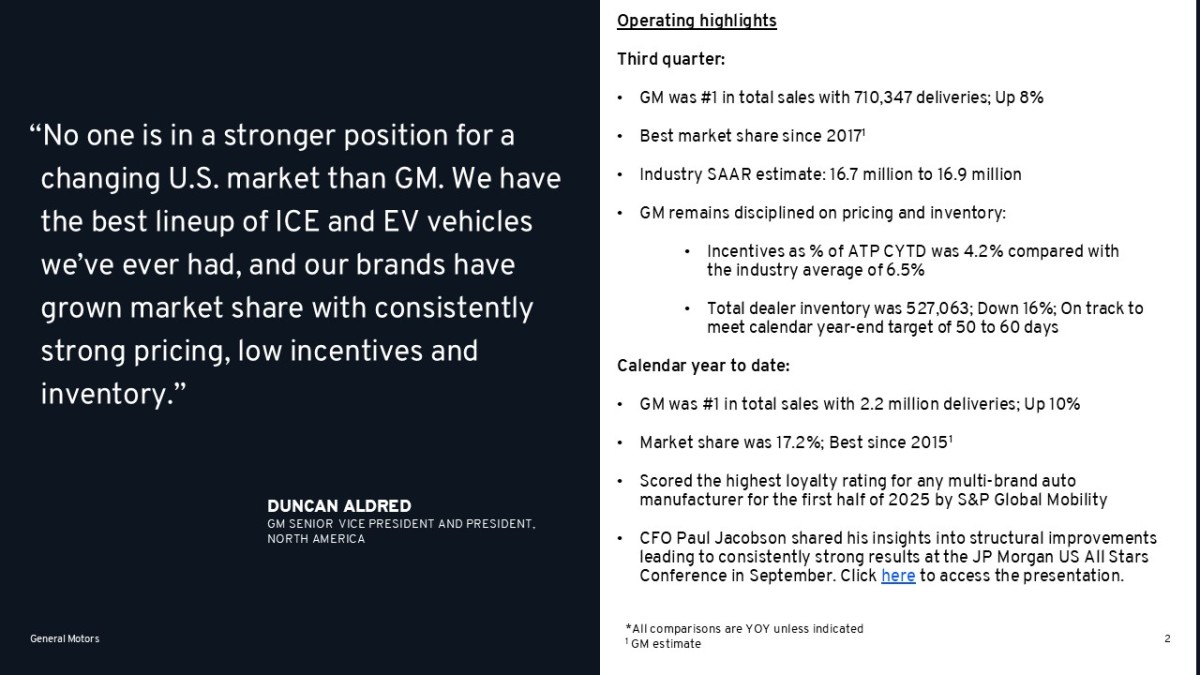General Motors reported that its U.S. sales rose 8% in the third quarter of 2025, with a total of 710,347 units delivered. The gain reflects strong performances across both its traditional gasoline lineup and its expanding EV portfolio, showing balanced momentum across the business.
SUVs such as the Chevrolet Equinox, GMC Terrain, and Buick Envista all posted record Q3 deliveries, while full-size pickups and large SUVs continued to anchor GM’s market leadership in highly profitable segments. Year-to-date sales have now reached 2.2 million units, marking the company’s strongest nine-month stretch in more than a decade and reinforcing its position as a dominant force in the U.S. auto market.

EV Momentum Builds
Perhaps most significant is GM’s performance in the electric vehicle space, where momentum continues to build at a rapid pace. The automaker delivered 66,501 EVs in Q3, marking its best-ever quarter for electric sales and underscoring growing consumer demand for its expanding lineup. Year-to-date EV deliveries now stand at 144,668 units, more than double the volume from 2024, highlighting the strides GM has made in scaling production and broadening its footprint in the EV market.
This surge solidifies GM’s position as the second-largest EV seller in the U.S., trailing only Tesla, with analysts pointing to improved Ultium-based products, stronger availability, and competitive pricing as key factors. GM’s multibrand approach and aggressive product strategy are starting to paying off.

Incentives Fill the Gap
The strong quarter was also shaped by buyers rushing to take advantage of EV incentives before policy changes took effect. With the federal $7,500 EV tax credit recently ended by the Trump administration, both GM and Ford quickly rolled out their own $7,500 incentive programs to cushion the blow and keep consumer demand from faltering.
These measures not only helped sustain momentum through September but also provided a big bridge of confidence for buyers who might otherwise have delayed purchases. How effectively these automaker-backed incentives carry over into Q4 could prove critical in determining whether sales growth holds steady in the absence of federal support.
Financial Pressures Remain
Despite the strong sales momentum, GM’s financial picture tells a more complicated story. In July, the company reported a 35% income slide for the first half of the year, pointing to rising costs, new tariffs, and the heavy financial burden of its EV investments. The automaker is under pressure to prove that its ambitious transition toward electrification can ultimately deliver returns.
CEO Mary Barra has maintained confidence that GM’s broad lineup, coupled with a steady cadence of new product launches, will provide the foundation for recovery. Still, profitability concerns continue to cast a shadow, reminding investors and analysts alike that strong sales volumes don’t always translate into financial stability.

Why It Matters
GM’s Q3 results underscore both its resilience and the challenges it faces. On one hand, the automaker is proving it can scale EVs at a faster rate than many rivals, securing a strong #2 position in the U.S. market.
On the other, costs tied to electrification, tariffs, and global uncertainty are squeezing margins. With GM planning new EV launches in 2026 and beyond, the coming quarters will test whether high sales volumes can translate into sustainable profits.


